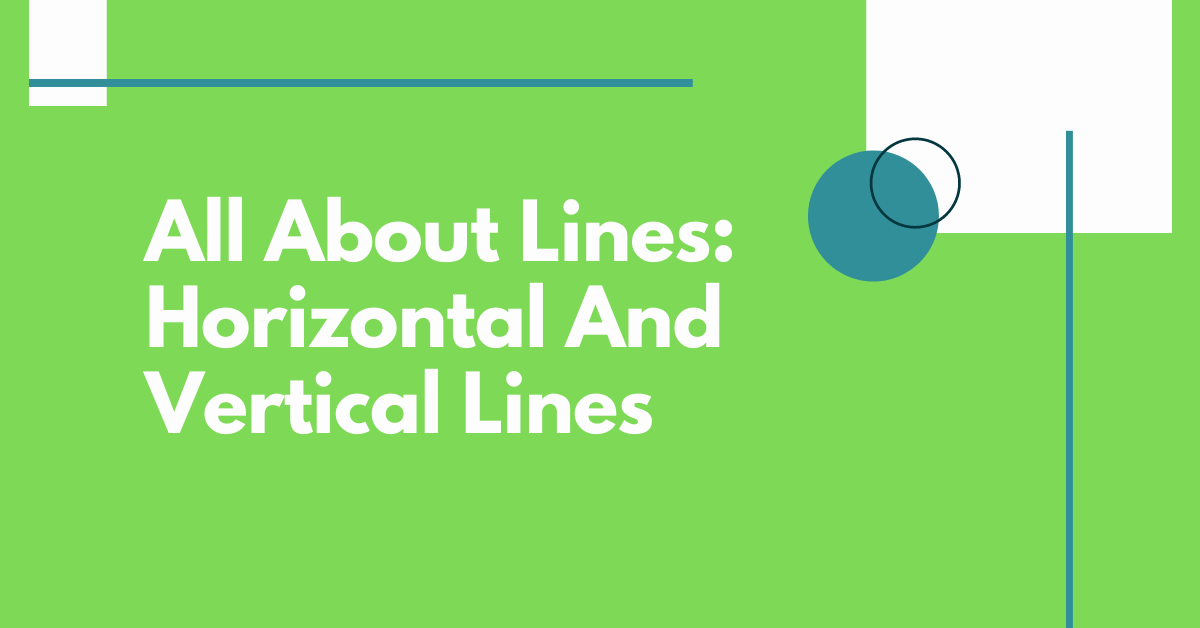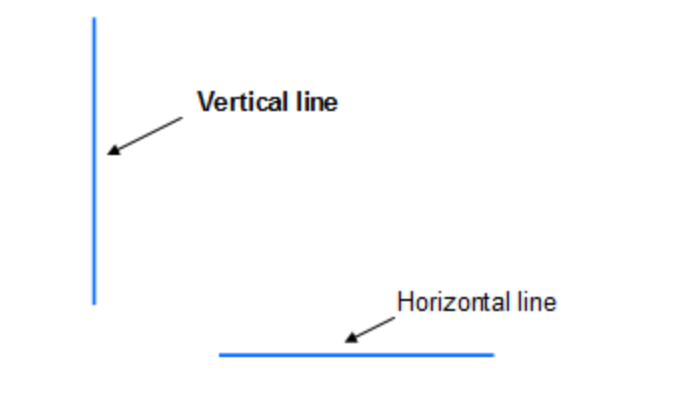A horizontal line is a straight line that runs from left to right or right to left in the coordinate plane and is parallel to the x-axis. In other terms, a horizontal line is a straight line with an intercept solely on the y-axis and not on the x-axis. A horizontal line serves as the foundation for flat forms. Let’s look at the qualities of the horizontal line, as well as its equation and slope.
The term “sleeping lines” refers to horizontal lines. Horizontal lines are those that are parallel to the x-axis in coordinate geometry. Horizontal line segments may be found in various shapes in geometry, including quadrilaterals, 3D shapes, and so on. Horizontal lines can be found on the steps of a staircase, boards on railway tracks, and other places in real life.
Table of Contents
Horizontal Line Slope
The slope of a horizontal line is either undefined or infinite. Note that the definition of “slope” in the coordinate plane involves finding rise over run between two points on the line, but there are no points that correspond uniquely to any other point on the line. So, while the equation may be valid, it will not have an answer for its slope because there are no values for rise and run.
A horizontal line has a slope of zero. We can observe that there is no increase in the y-coordinates since they are the same across the horizontal line when we calculate slope = rise/run. As a result, the y coordinates do not change, and the horizontal line’s slope finally becomes 0.
Equation of a Horizontal Line
All of the points on a horizontal line have the same y-coordinates. Thus, a horizontal line passing through any point (a,b) has the equation y = b, where b is constant.
x isn’t there in this case. It indicates that the x-coordinate of any point on the line can be anything, but the y-coordinate of all points on the line must be just ‘b’. The horizontal line’s y-intercept is (0, b)
We can observe that the y-coordinate of all these places is constant, which is -3, if we consider the preceding picture points (a,b): (2, -3), (1, -3), (-2, -3). As a result, this line’s equation is y = -3.
Vertical Line
A vertical line is a line in the coordinate plane with the same x-coordinate for all of its points. When charting the points for a function x = a on a coordinate plane, we will see that connecting the coordinates yields a vertical line. If L1 and L2 are the vertical lines . For all the values of y, all the points in the L1 have only ‘a’ as the x-coordinate, and all the points in the L2 have only ‘-a’ as the x-coordinate.
A Vertical Line Equation is a formula for calculating the length of a vertical line.
x = a or x = -a is the equation for a vertical line, where
The x-coordinate of any point on a line is x.
The point at which the line crosses the x-intercept is called a.
Vertical Line Properties
Because the line is parallel to the y-axis, the vertical line’s equation does not have a y-intercept .A vertical line’s equation is always of the form x = a, where ‘a’ represents the x-intercept. A vertical line’s slope is unspecified. The denominator of the slope is 0 since the x-coordinates do not change.
In arithmetic, the vertical line is used to determine if a relationship is a function. The vertical line L1 crosses the x-axis at (0, 0) and L2 crosses the x-axis at (-a, 0). The vertical line’s equation is written as y = b or in slope intercept form is y – b = 0. The point of intersection with the x axis occurs when y – b = 0 which is equivalent to 2x + 3y – 6 = 0. This equation simplifies to x + y – 3 = 0 for L1 or x – y + 3 = for L2.
This was some basic information on lines and one can explore more fascinating information on the Cuemath website.
All About Lines: Horizontal and Vertical Lines in Cybersecurity (FAQs)
While we might not be discussing geometry in a network security briefing, understanding horizontal and vertical lines takes on a whole new meaning in the realm of cybersecurity. Here’s a breakdown of these concepts in a way that relates to protecting your systems:
What are horizontal lines in cybersecurity?
Horizontal lines represent threat actors targeting a specific type of system or vulnerability across various organizations. Imagine a line going across different companies. This could be a hacking campaign exploiting a common software flaw or a phishing attempt targeting a particular user group (e.g., finance departments).
What are vertical lines in cybersecurity?
Vertical lines represent attacks targeting a specific organization, regardless of the system or vulnerability. Here, the line goes up and down within a single company. This could be a spear phishing attack targeting a CEO or a ransomware attack crippling an entire organization’s operations.
Why are horizontal threats concerning?
Horizontal threats are concerning because they can impact a large number of victims quickly. Hackers can exploit a widespread vulnerability with automated tools, potentially affecting thousands of organizations simultaneously.
Why are vertical threats concerning?
Vertical threats are concerning because they can be highly targeted and devastating. Attackers may have spent time researching a specific organization, making their attack more precise and potentially bypassing general security measures.
How can I defend against horizontal threats?
Here are some ways to defend against horizontal threats:
- Patching systems regularly: This ensures you’re not vulnerable to known exploits.
- Educating users about phishing: Empower employees to identify and avoid suspicious emails.
- Using strong passwords and multi-factor authentication (MFA): Make unauthorized access more difficult.
How can I defend against vertical threats?
Here are some ways to defend against vertical threats:
- Segmenting your network: Limit the damage an attacker can do if they breach a specific system.
- Implementing security monitoring: Detect suspicious activity within your network.
- Having an incident response plan: Know how to react and recover if a cyberattack occurs.
A Final Word…
By understanding both horizontal and vertical lines in cybersecurity, you can develop a more comprehensive defense strategy to protect your organization from a wider range of threats.
Remember, cybersecurity is all about layers – the more you have in place, the harder it is for attackers to succeed.
INTERESTING POSTS
- Confidential: How to Access Windows Computer from a Mac PC
- 6 Steps To Optimize Your Network For VoIP
- Exposed: Italian Company Fronting for Guloader Malware Operations
- 5 Certified Benefits of Identity Theft Protection
- Is Cyberbullying Worse Than Ever Before?
- Everything You Need To Know About Wireless Access Points
- Cybersecurity Technical Writing: Main Points
About the Author:
Daniel Segun is the Founder and CEO of SecureBlitz Cybersecurity Media, with a background in Computer Science and Digital Marketing. When not writing, he's probably busy designing graphics or developing websites.








